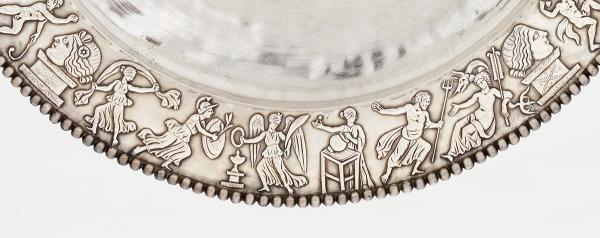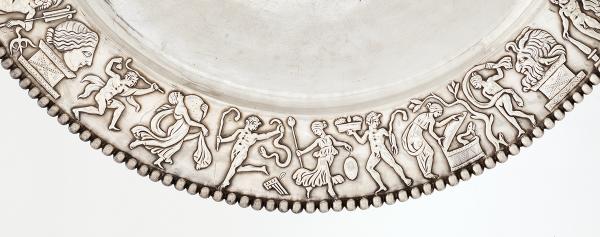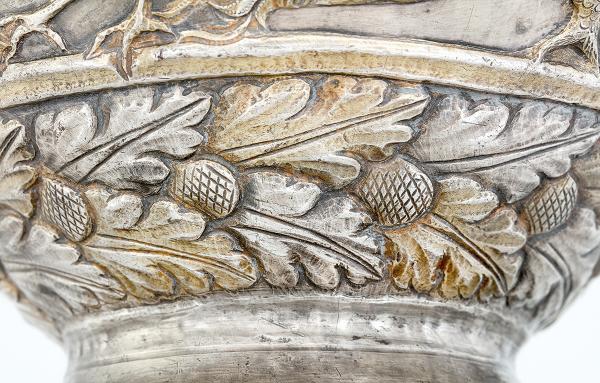Iconography, mythology
The task of the sub-project is to place the representations decorating the vessels of the Seuso treasure in the various contexts of Graeco-Roman culture, thus in their iconographic, historical and religious-historical contexts. Research primarily covers three main areas. The iconographic analysis of the vessels of the Seuso treasure includes the thorough study of the mythical stories that can be identified on the vessels. The representations of at least twelve Greek myths can be seen on the vessels of the treasure, which may even belong to a millennial iconographic tradition. Several objects were decorated with figurative depictions, yet images of non-mythological stories. The Seuso platter, which was actually the main piece of the originally gifted dining set, is the most significant in relation to the analysis of these non-mythical figurative scenes. Dionysian but non-mythical scenes, which appear on several vessels, are also included here. Whether non-figurative decorative elements (for example, vegetal motifs) and geometric motifs on several objects of the treasure have any special iconographic meaning is awaiting research.

Late Antique treasures of a similar type represent the most important context of the Seuso treasure; therefore the analysis of the iconography of depictions appearing on those vessels helps a similar analysis of the vessels of the Seuso treasure. Importantly, the research must study what type of decorations characterize silver objects found in treasure hoards of a similar age, what role Greek myths play on those items, as well as what the significance of non-mythical and ornamental decoration is.Although the culture of the late Imperial period officially became Christian, it continued to have deep-rooted connections with Graeco-Roman (pagan) traditions. Therefore, the research of the sub-project extends to the study of these issues and to how the significance of Greek mythology and Greek myths in the late Imperial Age and late Antiquity can be defined.
Head of the sub-project: Árpád Miklós Nagy, archaeologist, chief curator of the Museum of Fine Arts, head of the Department of Classical Antiquities



